Maximizing Child Safety With Smart Kids Tracker Solution
PsiBorg Technologies designed a smart kids tracker device that tracks the child’s location.
WSN is a self-organizing network formed of a large number of sensor nodes. Using their simple computing power, these sensor nodes sense the environment in the network. Some reasons to choose WSN for your IoT system are its large-scale nature, self-organized wireless network, multi-hop routing, robustness, and low cost.
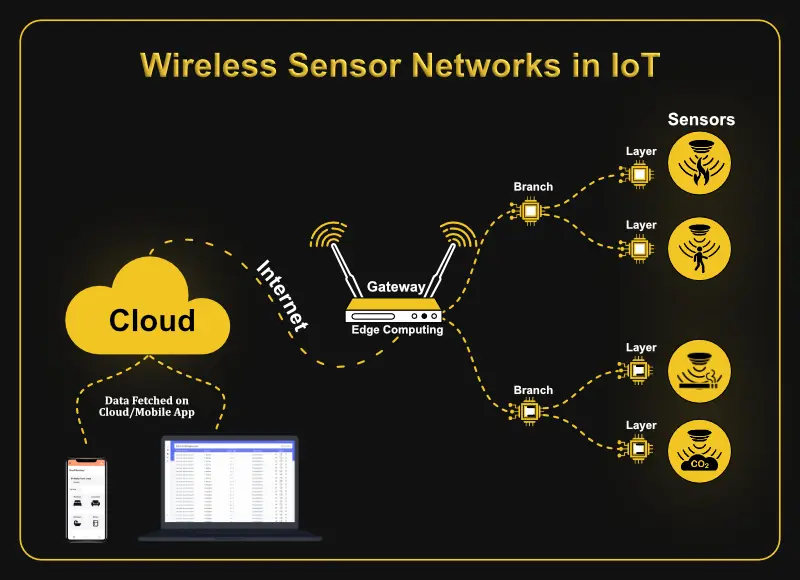
IoT Wireless sensor network service refers to an array of functionalities provided by the system that incorporate sensors, wireless communication, and data processing functions to gather and transmit information from the environment. The sub-services associated with WSN are:

Sensing
It includes the deployment of sensors to collect data from the environment. Sensors can measure several parameters depending on the application requirements, and the sensing service will ensure that the data collected is accurate and concerning the intended purpose.

Communication
The communication service facilitates the transmission of the data collected by the sensors to the central processing unit or data sink. Wireless communication protocols such as Zigbee, Bluetooth, Wi-Fi, or cellular networks are used to transmit information over short or long distances, depending on the requirements of the application.

Data Processing
Data processing implies the analysis and interpretation of the raw data collected by the sensors. This service includes filtering, aggregation, compression, and encryption of the data to remove iterations and improve accuracy. It can be performed either at the sensor nodes themselves (edge computing) or on centralized servers.

Management & Control
The data management and control service includes functionalities related to the configuration, monitoring, and maintenance of wireless sensor networks. It includes tasks like network configuration, node localization, energy management, fault detection, and network optimization.
1
SettingUp
This stage involves the setup and deployment of wireless sensor network infrastructure. The major tasks here are selecting nodes, configuring communication protocols, positioning sensors in the deployment area, and provisioning network resources.
2
Data Collection & Transmission
As soon as the WSN is deployed, the next step is to collect data from sensor nodes and transmit it to a designated data sink or central processing unit. This process encompasses tasks such as sensor data sampling, encoding, packetization, and transmission over wireless communication channels.
3
Data Processing & Analysis
After receiving the data at the central processing unit, the next step is to analyze the collected data. It includes data filtering, aggregation, normalization, correlation, and analysis using various algorithms and techniques.
4
Maintenance
The final step is the maintenance of the WSN infrastructure. This includes network monitoring, resource allocation, fault detection and recovery, software updates, security management, and energy optimization.
Wireless Sensor Network in IoT is an infrastructure-less wireless network that is used for deploying a large number of wireless sensors that monitor the system, physical and environmental conditions. Our extremely motivated and professional engineers are very well equipped to provide you with an all round solution if you are looking to incorporate WSN in your business.
To connect Sensors embedded in IoT devices, a communication protocol is used. A low-power wide-area network ,LPWAN, is a type of wireless network designed to allow long-range communications between these IoT devices.Lora based Wireless Sensor network is widely used. Sub-1 GHz, Zigbee,Thread etc are also used to connect sensor networks and gateway and data collected from this sensor network can be sent to cloud using cellular networks such as NBIoT, LTE-M or wifi etc.
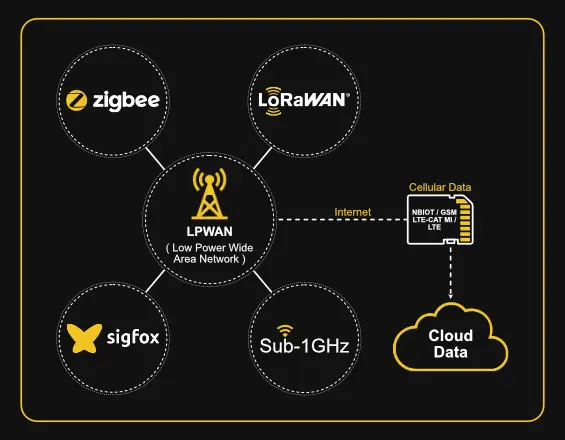
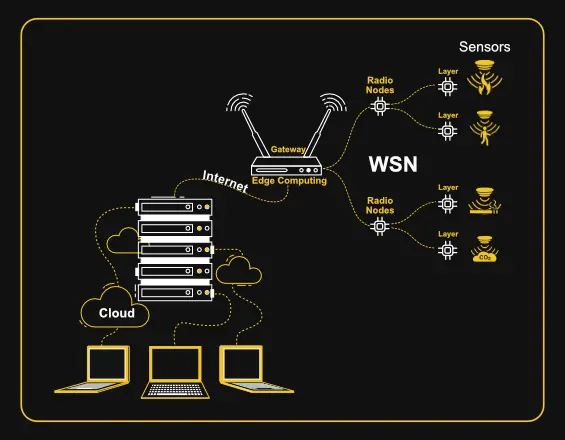
WSN protocols in IoT are used to provide a connectivity medium between IoT sensor nodes and a central gateway. IoT consists of different tech stacks, WSN is just one and is a subset of IoT. It is a part where data is transmitted among several IoT devices mostly without internet.
Patient monitoring in hospitals , Home security, Military applications, Livestock monitoring , Server Room monitoring
Wireless sensor network for smart agriculture
Wireless sensor network for forest fire detection
Wireless sensor network for water quality monitoring
Wireless sensor network for office monitoring
Wireless sensor network for environmental monitoring
Wireless sensor network for landslide detection
Wireless sensor network for IoT security
Fault Tolerance – Fault tolerance is the ability of the network to work even when there is a break due to sensor node failures.
Mobility of Nodes – Nodes can be moved anywhere within the sensor field in order to increase the efficiency of the network.
Scalability – WSN is designed in such a way that it can have thousands of nodes in a network.
Feedback in case of Communication Failure – If a particular node fails to exchange data over the network, it informs the base station immediately without any delay.
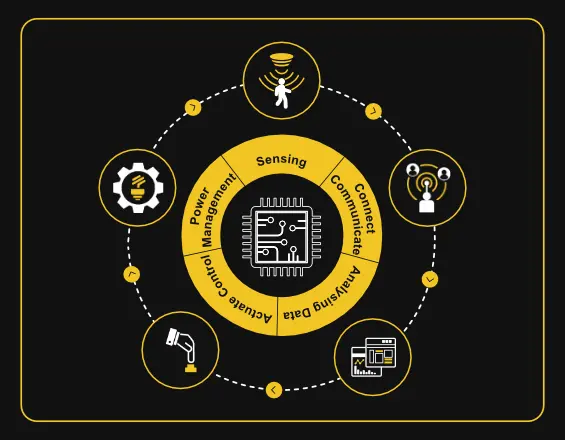
Ready to elevate your IoT devices with advanced IoT solutions? Contact us today to discuss your project requirements and explore the possibilities.

Expertise
Our team comprises seasoned developers with a proven track record in delivering successful IoT projects.

Innovation
Stay at the forefront of technology with innovative IoT solutions tailored to your unique requirements.

Reliability
Trust in the reliability of our IoT products, ensuring the stable and secure operation of your IoT devices.

The true success of a business lies in the trust and partnership cultivated between clients and the company. Click to read about some of our proudest achievements.
Maximizing Child Safety With Smart Kids Tracker Solution
PsiBorg Technologies designed a smart kids tracker device that tracks the child’s location.
STEP 1
Contact Us
Reach out to us via the contact form or give us a call to initiate the conversation about your IoT development needs.
STEP 2
Get Consultation
Schedule a consultation with our experts to discuss your project in detail, aligning our approach with your unique vision.
STEP 3
Get a Cost Estimate
Receive a detailed cost estimate tailored to your project’s scope and requirements, ensuring transparency in your investment.
STEP 4
Project Kickoff
Once finalized, we'll initiate the project kickoff, marking the beginning of our collaborative journey toward successful IoT product development.
Wireless Sensor Network (WSN)is deployed in a large area with a large number of wireless sensors nodes in an ad-hoc manner that is used to monitor the system, physical or environmental conditions. The data is then sent to gateway for processing or edge computing.
The sensor nodes are connected over Low Power Wide Area Network (LoRaWAN, Sub-1Ghz, ZigBee, Sigfox etc) which is used to connect sensor Nodes to the gateway unit. The gateway unit is connected to the internet (consisting of Cellular or WiFi Module) from where the processed or edge computed data which is further sent to the server or Cloud.
The Gateway acts as a bridge between the Wireless Sensor Network and cloud. IoT Gateways manage device connectivity, data filtering, processing, protocol translation, security etc. Adding a cellular module (works on LTE, NBIoT, LTE-catM1, etc) or an Internet modem (works on WiFi) to the gateway makes the WSN remotely managed.
Yes, FOTA update in wireless sensor network can be done, although it is sometimes complex to provide wireless update to node device because of memory and storage limitations.
The sensor nodes used in Wireless Sensor network systems are integrated with the onboard controllers. The complete circuitry manages the operation and monitors it mainly. Everything is connected with the base station known as the Gateway, where high end processing of data collected from distributed sensors is done. The data is further sent to cloud for storage and analysis, and this data is fetched by a mobile or a cloud application. All the distributed sensors devices in WSN are mostly connected over a LPWAN and communicate with the gateway.
Surveillance and monitoring,Landslide detection ,Patient monitoring in hospitals ,Environmental monitoring ,Smart Agriculture, Home security, Military applications, Livestock monitoring and many more.
Wireless sensor networks mostly designed in two Topologies:-
Centralized sensor network and Distributed sensor network
A wireless sensor network is a subset of the IoT system.
IoT involves different tech stack including sensors, hardware, gateways, analytics to end application.
WSN are usually non-IP networks. They run on low power wide area networks such as Zigbee, LoRa etc. These sensors forward their data to another hub which is a gateway between hardware and cloud. And this is how WSN forms an IoT system.
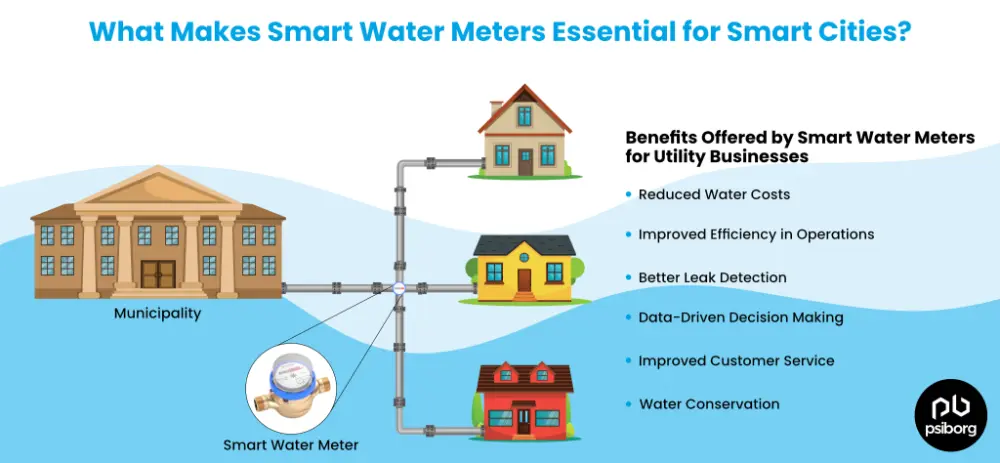
Smart water metering systems provide consumers with precise and timely measures of water consumption, enabling them to monitor and manage their daily water usage.
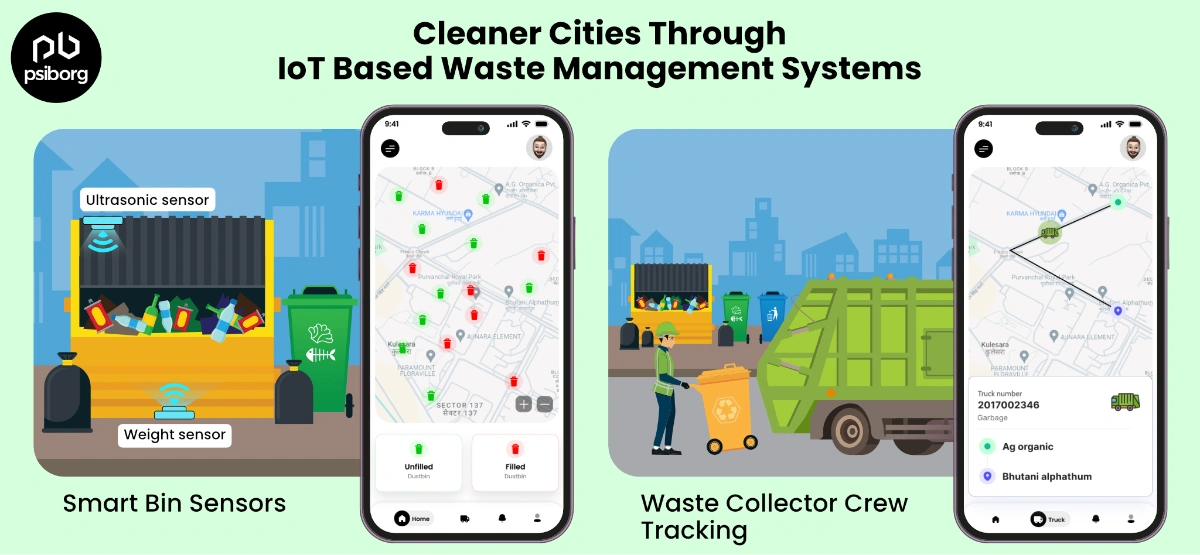
Integrating IoT in waste management practices will lead to more data-driven waste collection practices.
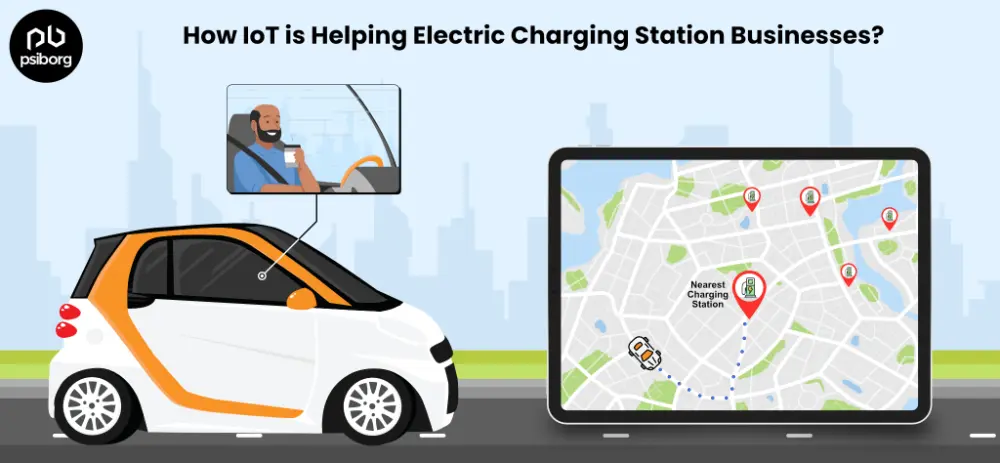
With the help of IoT, charging station businesses can collect and analyze all the data in one place, which helps maintain and monitor charging stations.